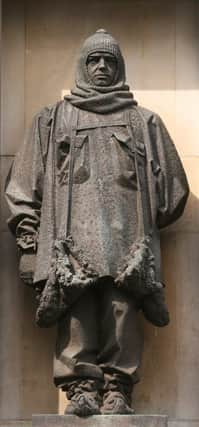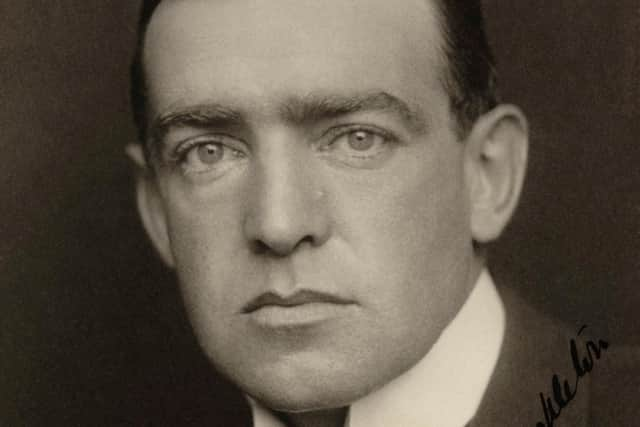Ernest Shackleton, the Irish Antarctic explorer hailed one of greatest Britons


One might even take the view that he had a much better claim to inclusion in the top ten than two individuals who made that cut.
The objection that Shackleton was Irish rather than British is misplaced. As an Irish unionist, he would have regarded himself as both Irish and British (or Anglo-Irish). Indeed, he took lifelong pride in his Irish roots and frequently identified himself as an Irishman.
Advertisement
Hide AdAdvertisement
Hide AdShackleton was born 150 years ago on February 15 1874 in Kilkea House, Co Kildare. He was the second child and eldest son of Henry Shackleton, a gentleman farmer who later studied medicine and became a doctor, and his wife Henrietta Letitia Sophia, daughter of a RIC officer who became inspector-general of constabulary in Ceylon.


Ernest was educated at Dulwich College in London but chose, contrary to his father’s wishes, not to follow his father into the medical profession. Instead, he joined the merchant navy and by the time he was 24 he was a qualified master mariner.
Travelling widely, he developed a fascination for polar exploration.
In 1901, Shackleton was chosen (because he was friendly with the expedition’s principal sponsor) to go on the Antarctic expedition led by R F Scott on the ship 'Discovery'. With Scott and one other, Shackleton trekked towards the South Pole in extremely difficult conditions, getting closer to the Pole than anyone had come before. Shackleton became seriously ill and had to return home but had gained valuable experience.
Advertisement
Hide AdAdvertisement
Hide AdBack in the UK, Shackleton became a journalist and was then elected secretary of the Scottish Royal Geographical Society.
In the general election of 1906, he unsuccessfully contested ‘heavily Hibernicised’ Dundee as a Liberal Unionist. Apart from T P O’Connor’s Liverpool constituency, more inhospitable territory for the Unionist cause on the British mainland would be difficult to identify.
In 1908, he returned to the Antarctic as the leader of his own expedition, on the ship 'Nimrod'. During the expedition, his team climbed Mount Erebus, made many important scientific discoveries, and came within 97 miles of the South Pole, closer than anyone had been before.
He wisely decided not to proceed further because his team had insufficient food to get back to base camp. As he explained to his wife Emily: ‘A live donkey is better than a dead lion.’ She agreed.
Advertisement
Hide AdAdvertisement
Hide AdAs Michael Smith, the author of ‘Shackleton – By Endurance We Conquer’ (2014) and biographer of several other polar explorers, has observed, ‘With a few extra pounds of food, the first person to stand at the South Pole would have been the man from Kildare’. He was knighted on his return home.
In 1911, Norwegian explorer Roald Amundsen reached the South Pole, followed by Scott and his team who all perished on the return journey.
After Amundsen reached the South Pole, Shackleton sought a fresh challenge so in 1914 Shackleton made his third trip to the Antarctic with the ship 'Endurance', planning to cross Antarctica via the South Pole, a journey of almost 1,800 miles.
Early in 1915, 'Endurance' became trapped by the pack ice, and 10 months later it was crushed. (The wreck was discovered in March 2022 by the search team Endurance 22.)
Advertisement
Hide AdAdvertisement
Hide AdShackleton and his crew had already abandoned the ship to live on the floating ice. In April 1916, they set off in three small boats, eventually reaching Elephant Island. Taking five crew members, Shackleton went to find help. In the ‘James Caird’, an open boat only 22 feet in length, the six men spent 16 days crossing 800 miles of some of the stormiest seas in the world to reach South Georgia and then trekked across the mountainous island to a Norwegian whaling station.
Relief expeditions under Shackleton’s command rescued the remaining men from Elephant Island in August 1916.
'South', Shackleton's account of the 'Endurance' expedition, was published in 1919.
Shackleton's fourth expedition aimed to circumnavigate the Antarctic continent but on January 5 1922 Shackleton died of a suspected heart attack on board the ‘Quest’ in King Edward Cove, South Georgia, at the age of 47. He was buried in Grytviken cemetery on South Georgia.
Advertisement
Hide AdAdvertisement
Hide AdFor most of the 20th century Ernest Henry Shackleton was completely overshadowed as an Antarctic explorer by Robert Falcon Scott. Scott was feted as a heroic failure and Shackleton was largely forgotten but since the 1980s Scott’s reputation has been falling and Shackleton’s has correspondingly risen.
In ‘Antarctic Destinies: Scott, Shackleton and the Changing Face of Heroism’ (2007) Stephanie Barczewski, an American cultural historian, explained this had little to do with new discoveries regarding their lives and characters but far more to do with broader cultural changes and changes in conceptions of heroism in the UK and the United States.
Be that as it may, Shackleton's genius as a leader consisted in part in never taking unnecessary risks or asking his men to do anything he would not do himself. His selfless concern for his men was such that he gave his mittens to photographer Frank Hurley, who had lost his during the boat journey between Elephant Island and South Georgia. Shackleton suffered frostbitten fingers as a result.
In the preface to his 1922 book ‘The Worst Journey in the World’, Apsley Cherry-Garrard wrote: ‘For a joint scientific and geographical piece of organisation, give me Scott; for a Winter Journey, Wilson; for a dash to the Pole and nothing else, Amundsen: and if I am in the devil of a hole and want to get out of it, give me Shackleton every time’.
Advertisement
Hide AdAdvertisement
Hide AdIn 1956 Sir Raymond Priestley, a contemporary of Shackleton, paraphrased these words in an address to the British Science Association: ‘Scott for scientific method, Amundsen for speed and efficiency but when disaster strikes and all hope is gone, get down on your knees and pray for Shackleton.’
Shackleton is now internationally regarded as a role model for leadership in extreme circumstances by organisations ranging from the Centre for Leadership Studies at Exeter University to the US Navy.